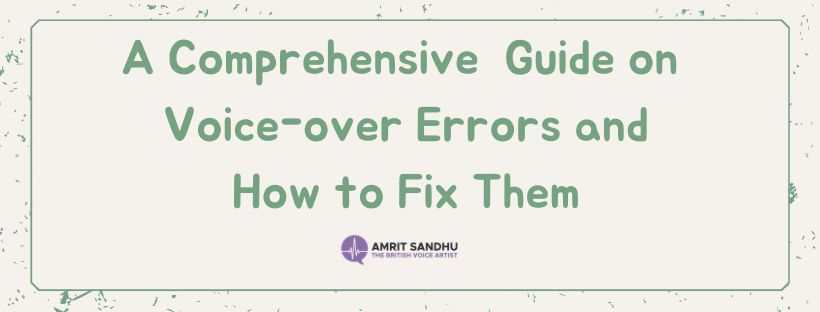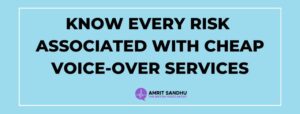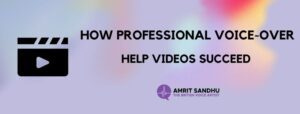Your videos can look more polished with voice-over narration but even experienced voice actors occasionally need to correct mistakes that lower the overall standard of the production. We’ll look at typical voice-over errors in this blog article and provide helpful advice on correcting them.
Error 1: Background Noise and Poor Audio Quality
Your voice-over’s overall quality might be harmed by distracting background noise, pops, clicks, and poor audio quality.
How to fix: Invest in a high-quality recording setup and microphone. Select a calm area for recording that is far from loud appliances, traffic, or HVAC systems. Reduce plosive noises with pop filters, and eliminate background noise with editing software. Maintain your equipment on a regular basis to keep it operating at its best.
Error 2: Ignoring Timing and Synchronization
The voice-over in videos frequently needs to match the visuals. A fragmented viewing experience can be produced by disregarding timing and not matching your narration to the event taking place on the screen.
How to fix: Sync up your narration with the images. Make sure your voice-over properly matches the action on the screen by using a video editing program or timeline markers. To maintain a seamless connection between the audio and the pictures, be aware of pauses and transitions.
Error 3: Lack of preparation and Familiarity with the Script
While being recorded, reading a script for the first time might cause awkward pauses, word stumbles, and a lack of fluency.
How to fix: Before recording, make sure you are well familiar with the script. Reading it aloud several times while paying attention to the sentences’ and paragraphs’ natural transitions will help. For pauses or shifts in emphasis, annotate the text. Your ability to convey the material with assurance and ease will increase as you become more familiar with it.
Error 4: Monotone Delivery or Overemphasis
Voice-over narration should be engaging and emotional, yet monotone delivery or excessive emphasis might turn off viewers. Less relatable information can result from readings that are overly emotional or stilted.
How to fix: Work on your voice’s nuances of modulation and inflection. To discover the ideal balance for your material, experiment with various emotional tones. Be aware of the script’s context and purpose; accentuate important points without sounding forced; and avoid going overboard. Finding the perfect tone can be aided by recording several takes and listening to them all.
Error 5: Poor Pronunciation and Enunciation
Effective voice-over narration requires precise and clear pronunciation. It might be difficult to understand your message and it can damage your credibility if you mispronounce phrases or fail to enunciate effectively.
How to fix: Perfecting a skill requires practice. Spend some time practicing your speech, paying close attention to any difficult words or phrases. Think about consulting internet dictionaries or pronunciation aids. You can find out where your pronunciation needs work by recording yourself and listening to the recording.
Error 6: Tone and Tempo are Inconsistent
Keep the listener interested by maintaining a constant tone and tempo throughout your voice-over. Listeners can become distracted and the flow can be broken by abrupt shifts in tone or speed.
How to fix: Spend some time going over your script before recording to make note of any changes to the tone or tempo. These regions can be marked with highlighting or remarks. Keep an eye out for these cues as you record, and get practice at slipping between portions without any awkward pauses. To achieve a more reliable delivery, re-record the piece if necessary.
Finally, voice-over narration is a skill that needs development and close attention to detail. You may greatly enhance the quality of your voice-over work by recognizing and correcting typical errors including bad pronunciation, inconsistent tone, and audio quality difficulties. To improve as a voice-over artist and to increase the impact of your videos, keep in mind that practice, planning, and patience are essential.




